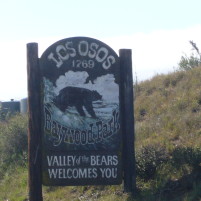Los Osos CSD seeking delay in sewer rate increase
April 11, 2020
 The Los Osos Community Services District voted 4-1 on April 7 to ask the San Luis Obispo County Board of Supervisors to delay the sewer rate increase process because of the current shelter-at-home order.
The Los Osos Community Services District voted 4-1 on April 7 to ask the San Luis Obispo County Board of Supervisors to delay the sewer rate increase process because of the current shelter-at-home order.
On March 4, the county sent out protest notices to provide residents the ability to legally protest the rate increase before the April 21 meeting. Despite issues with the public’s ability to attend meetings or properly protest a utility rate increase, the county is moving ahead with plans to approve the rate increase at the April 21 SLO County Board of Supervisors’ meeting.
Using Zoom to comment at Los Osos’ virtual meeting, activist Julie Tacker voiced concerns over the constitutionality of the county meeting because the doors will be locked, and the public will not be allowed to attend. Tacker also questioned the public’s ability to participate during the legally required protest period.
“It is not safe to go door-to-door to campaign,” said activist Julie Tacker. “I think what they are doing is undemocratic. They should restart the whole process.”
Los Osos Board Member Christine Womack dissented, noting that sewers are expensive and that an increase in rates is eminent. Womack was appointed to the board after an election error left one seat off the 2018 ballot. She will be up for reelection this fall.
If approved, charges for single-family homes are slated to increase from $586.20 to $896.91 to a year, and businesses from $733.56 to $3,485.36 over the next five years. These charges do not include a sewer district assessment of $25,000 per property that was levied in 2007.
In its letter to the county, the Los Osos CSD Board notes its concerns over raising rates while the community is suffering the financial impacts of a pandemic, as well as issues with public participation.
“Though we do understand the public meetings can and will be held virtually, by experience, we know how limiting this format is to public participation, especially by seniors and low-income individuals and families that typically have limited means to pay for the proposed rate increase,” according to the Los Osos board’s letter. “With dramatic unemployment and the closure of many businesses for an indefinite period of time in Los Osos, please consider the ramification of moving forward.”
However, the Los Osos Board was mistaken: the SLO County Board of Supervisors is not permitting the public to attend through virtual technology as Los Osos did at their last meeting.






The comments below represent the opinion of the writer and do not represent the views or policies of CalCoastNews.com. Please address the Policies, events and arguments, not the person. Constructive debate is good; mockery, taunting, and name calling is not. Comment Guidelines